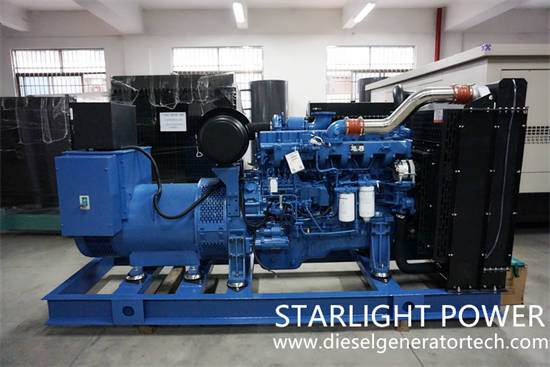Reciprocating internal combustion engine emission rules for standby and emergency generators do not apply to the following applications:
1. Motor vehicles, or the following non-road engines:
Self-propelled (tractor or bulldozer).
Propel while performing the designed function (lawn mower).
Portable or transportable, including: with wheels, slides, handles, carts, trailers or platforms.
If a portable off-highway engine is in the same location for more than 12 months, or a full year of operation, the engine can become stationary.
2. Existing emergency engines: located in residential areas, public institutions or commercial areas and not used for local reliability. The engine must meet the emergency engine operation requirements:
Unrestricted use in emergency situations (such as power failure, fire, flood).

The emergency engine can run 100 hours per year for any combination of:
Maintenance and Testing:
50 hours of the 100 hour allotment per year may be used for non-emergency situations if financial arrangements have not been made.
Local reliability as part of a financial arrangement with another entity if a particular standard only meets existing RICE in the Hazardous Air Pollutant (HAP) area.
The RICE rules apply to the following applications:
Engines greater than 500 hp and used as primary power sources include: Existing engines manufactured before December 19, 2002. New engines built on or after December 19, 2002. Retrofitted engines, where construction began on or after December 19, 2002.
Engines less than or equal to 500 hp and used as primary power sources include: Existing engines manufactured before June 12, 2006. New engines built on or after June 12, 2006. Retrofitted engines, where construction began on or after June 12, 2006.
EPA finalizes rules:
In January 2013, the NESHAP rules for backup generators allowed them to run on SD) fuel without using Ultra Low Sulfur Diesel (ULSD) fuel.
Utilizing ULSD: EPA's time requirement negates the argument that ULSD already has sufficient resources to call for immediate use.
Regarding reporting times and required information for emergency engines: EPA rejected requests to increase reporting times, arguing it was too burdensome.
Operating Standards for Non-Emergency Situations: The EPA rejects arguments that the standards for allowing such operations are "too vague and broad."
Summary/rule application:
Beginning in 2007, the EPA finalized plans to harmonize emissions requirements for stationary diesel engines with existing EPA off-road regulations. All engines are divided into layers. The classification of grades is based on production date and engine/generator size.
Regulatory application:
Applying EPARICE regulations to each facility's emergency generator application can be an extensive or relatively simple process, depending on generator engine size, date of engine production, and generator usage.
Follow these steps to determine the applicable regulations:
1. Certain laws do not apply because: Gensets are used for power outage emergencies (unlimited use in these emergencies).
2. Determine if any local regulations apply. Engines used for this application can run indefinitely to provide emergency power, and can operate for up to 100 hours in non-emergency conditions.
If the application of the generator set listed above is considered a "primary source", Rice's Law will apply. This engine is built by Cummins to meet Tier 2EPA certification requirements.
If a generator set is required to comply with a RICE application, the following steps will help maintain generator emissions:
Make sure to maintain the generator set according to the manufacturer's standards. Items such as: engine repair, cooling system service, air system service (including engine air supply and cabin air supply), fuel system (including changing fuel filters and monitoring fault codes), utilization of ultra-low or low-sulfur fuel, utilization of Exhaust aftertreatment system.
Jiangsu Starlight Electricity Equipments Co.,Ltd. is a manufacturer of professional generators, diesel generator sets, non-moving generator sets, Cummins generator sets, Volvo generator sets, etc. It has 64 sales and service departments across the country, providing users with design, supply, debugging, and maintenance at any time. Welcome customers to come to consult and visit. Looking forward to your inquiry, please send email to us for details [email protected].
Copyright © Guangxi Dingbo Generator Set Manufacturing Co., Ltd. All Rights Reserved | Sitemap
Update cookies preferences